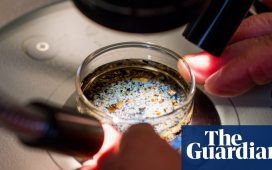Minute printed solar panels at the back of the eye could be key to helping sufferers of age-related macular degeneration (AMD), a pioneering new study has said.
Scientists at the University of Surrey are for the first time using high-performance organic semiconductors, which may one day restore colour vision.
AMD is the UK’s biggest cause of sight loss, with an estimated 1.5 million sufferers, and for most, there is no treatment. Dame Judi Dench spoke her struggles with the condition during an interview with Louis Theroux in 2022, telling the BBC journalist he looked “fuzzy” to her.
One treatment proposed by researchers would involve inserting a tiny ‘solar panel’ at the back of the eye.
Experts involved in the study researchers believe new materials could do the job – while being cheaper and more flexible than alternatives.
Dr Leslie Askew, a member of the research team, explained: “Just like solar panels convert light to electricity, our flexible device sits at the back of the eye, converting light to electrical signals carrying colour information through to the optical nerve.
“Previously, this has only ever been achieved in black and white vision – so to be able to restore colour vision is really exciting.
“We are using thiophene-based materials paired with acceptor molecules to improve the output signal to a point where cells in the middle of the retinal layers can be stimulated successfully.”
Dr Maxim Shkunov, Senior Lecturer at Surrey’s Advanced Technology Institute, added: “One of the most compelling aspects of our research is that we can print these miniature solar panels like you might print paper.
“Not only is that much cheaper and possibly more accessible – but the array of panels can then be rolled up.
“They will fit comfortably in the back of the eye, eventually providing a larger field of vision.
“This also means they can be implanted with much less invasive surgery, helping patients recover faster, too.”
The findings are patent-pending, with the team hoping they can be used to design an artificial retina to help patients suffering from retinal disease.











